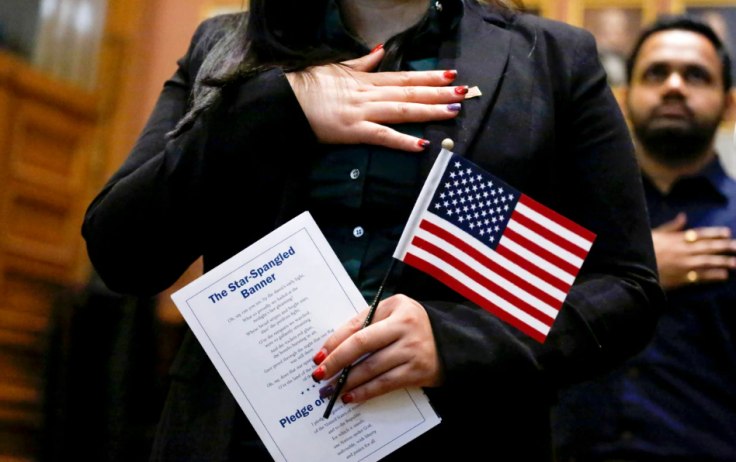
SEATTLE - Each year, hundreds of thousands of people all across the United States are granted citizenship. During the last decade, the U.S. Citizenship and Immigration Services (USCIS) has welcomed more than 7.7 million naturalized citizens into the U.S. and this Fourth of July week, a little over 11,000 people are expected to be granted their citizenship in 195 naturalization ceremonies all across the nation.
Last fiscal year, USCIS welcomed 878,500 new citizens. Among the top five countries of birth for people seeking naturalization, Mexico led the pack with 12.7% of all naturalizations. The Dominican Republic (4%) and Cuba (3.8%) also made the top give.
Most of the individuals that were granted citizenship during fiscal year 2023 resided in 10 states. More than 50% of applicants lived in either California, Texas, Florida or New York, while 20% lived in either New Jersey, Illinois, Washington, Pennsylvania, Massachusetts or Virginia.
The city that saw the largest number of new citizens was Dallas, who led the nation with 4.1% of all naturalizations in FY 2023.
According to information from the USCIS, the number of naturalizations has gone back to normal after a significant dip during the COVID-19 pandemic.
In 2020, only 628,000 people became new citizens while 2021 saw a 30% increase with 814,000 new Americans. In 2022, 969,000 immigrants became citizens in the United States, which was the highest number since 2008. Naturalizations in fiscal years 2022 and 2023 make up nearly a quarter (24%) of all naturalizations over the past decade, according to the USCIS.
In order to become a citizen of the United States, the applicant must meet certain eligibility requirements such as being a lawful permanent resident for at least five years, know fundamentals of U.S. history and about the U.S. government and demonstrate an ability to read, write, and speak words in English, between others.
In general, a noncitizen must spend at least five years as a lawful permanent resident to be eligible while a spouse of a U.S. citizen must spend at least three years. The median years spent as an LPR for all citizens naturalized in FY 2023 was seven years.
In 2023, the vast majority of the people who applied for citizenship came from immediate relatives or through family-sponsored preference categories. Refugees and asylees only made up for 100,100 of all applicants.
But becoming a U.S. citizen comes with a cost. Back in April, the application fee went up to $710 for those filing online and $760 for those filing on paper by mail. During the Trump administration, USCIS bumped the fee to $1,170 and ended the fee waiver for vulnerable people, including asylum-seekers in 2020.
For more questions on how to become a U.S. citizen, you can access USCIS's website here.
© 2024 Latin Times. All rights reserved. Do not reproduce without permission.







